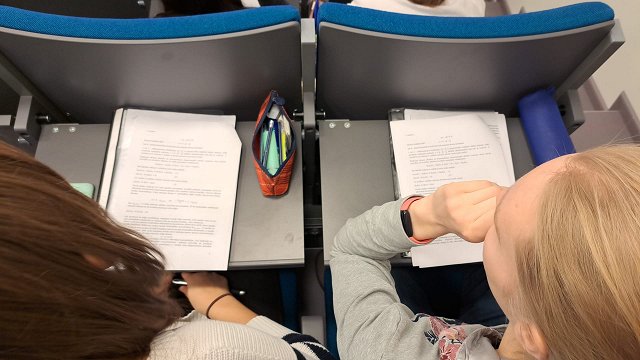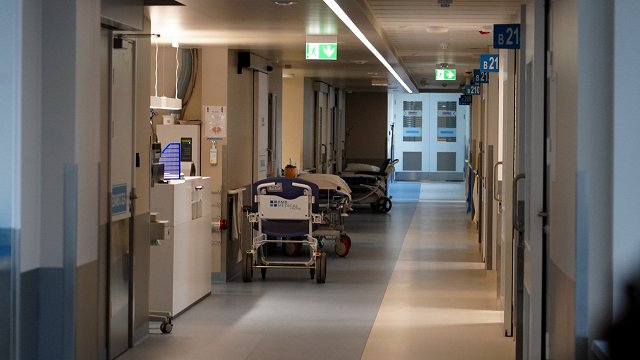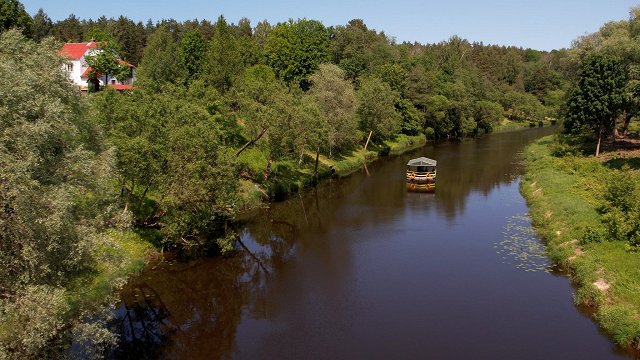Arvīds Bāliņš, a student at RTU’s Faculty of Mechanical Engineering, Transport, and Aeronautics, predicts that the success of this rocket and other Latvian space sector success stories will eventually boost interest in space technologies. He himself hopes to one day be involved in putting humans on Mars. “It seems like pure science fiction at the moment, but the world has started to take the first steps towards it,” says Bāliņš. He shares more about the high-power rocket built by RTU students and RTU Engineering Secondary School pupils in an interview with Labs of Latvia.
This is the second rocket you’ve helped build and launch. How did it all start?
I’ve been interested in space since 9th grade. That was when I saw the SpaceX rocket landing and realised that this was the field I wanted to study. At university, I had the opportunity to join the rocket team from my first year, to learn and develop. Seeing theory in practice is a huge help in the study process: the desire to learn grows exponentially.
In 2021, after years of struggle, we launched the first rocket and demonstrated that we could get to launch. This is by no means a trivial task. It is not a matter of assembling a rocket and launching it. There are a lot of tests beforehand, negotiations with the Civil Aviation Agency: you can’t launch a rocket from just anywhere. It is space, after all: every single one of those 100 things has to be right for anything to happen.
The first rocket lift-off was successful, and we were able to receive data. We were unsuccessful in recovering the rocket, however: we lost communication and the rocket with it. This experience allowed us to understand what we were still missing. We can talk about how cool the rocket is until launch, but only when we launch it can we check that everything is really as we imagined and planned. Launching the first rocket was a very valuable experience.
In less than a year, we developed another. This is already a high-capacity rocket with specific size requirements and performance targets. The second rocket was again developed from scratch: nothing was ready in advance. Again, it had a unique design: that is the most important thing in the learning process.
How successful was the launch of the second rocket?
The launch of the first rocket taught us a lot, so the launch of the second rocket was much smoother and the flight was more successful. We achieved all our main objectives and managed to demonstrate a fairly complex flight. There were no problems with recovery either. The same evening that we recovered the rocket, we were ready to put a new engine on it and launch it again.
If we look at the European level, this was a really complex rocket and flight: there are about 30 university teams in Europe capable of this level of flight. We have every chance to compete in Europe next year. That is one of our plans for the future.
What was the main benefit of launching this rocket?
Above all, records. All the Baltic records are ours: while the Estonians and Lithuanians are just watching, we have already launched two rockets. We are in a unique position.
A successful flight is the ultimate proof of our ability to create complex systems that work. After the flight, they are considered to have proven themselves in practice.
In the spring, we will produce a bachelor thesis where we will create a simulation specifically for our rocket that addresses the question of how our rocket will reach its highest point as far as the wind blows it away. The experience of launching these rockets also allows us to write scientific publications on how we have designed this rocket. After the rocket launches, we have so much data that we spend two weeks just reading it and creating an overview. We have a document of several dozen pages where we have analysed how each system did. It is a unique experience.
The most beautiful of our records is reaching a speed of 1,000 km/h. This was made possible by reducing the weight of the rocket: every gram less is extra speed. The next step is to exceed the famous speed of sound: our third rocket might already be able to do it.
When can we expect the third rocket?
We plan to experiment with launching rockets from stratospheric balloons. Such a launch would take place from an altitude of 20 kilometres or more, where the air resistance is 1-2% compared to what it is on Earth. These are unique conditions that allow relatively small rockets to reach very high altitudes.
What does such a rocket need? How much learning is there in it?
This, our second rocket, is special because it can already fly at supersonic speeds. It’s a very difficult team effort to design and put it all together: one team member soldered, another tested, another built the flight computer. We’ve got to the point where we can put the chip on the board ourselves and get it to talk to us, to send us data. We also sewed the parachute of the rocket ourselves.
The rocket tube is also not a normal tube you can buy in any building supply store. It’s made in-house, from fibreglass. And it’s not enough to watch a few YouTube videos to make it. We tried several techniques, several attempts, before the pipe was ready.
The rocket was made in nine months, in parallel to our studies: half of the team are at school, and the other half are students. Everybody has lessons, Olympiads, exam periods, so we made the rocket in the evenings. We were all really motivated to get this mega project done.
Why is it important to make rockets?
There are many ways of looking at it. First, it is a learning process and an opportunity to put theoretical knowledge into practice. What is unique is that one person cannot develop and launch such a rocket. As a mechanical engineer, I could probably make the body and some of the parts myself, but when it comes to the flight computer, which has to be able to send data, that is beyond my capabilities. It’s a team effort of 10 people in different disciplines. Secondly, it is a technological challenge.
The European competitions are still ahead of you, but you’ve already taken part in Space Camp: while others were having a summer break, you went to Space Camp. What was the motivation?
Yes, more than half of our team has been to the European Space Agency camp in Belgium. We have made it among the space superpowers: the contacts we have gained allow us to build our knowledge base and learn from professionals.
Indeed, this camp cannot be compared to a vacation. Four weeks in a foreign environment with 30 people from 20 countries. Lectures started at 8am and lasted until 6pm, all the time talking about space. I took part in a microsatellite camp. Each rocket has a payload, and it costs about 2,000 dollars to lift one kilo into space, for example. I had the opportunity to experience how satellites are designed to get that money into space more successfully. It is important to do it right.
My teammate Aija Monika Vainiņa was learning about space operations. Once a spacecraft or satellites are in orbit, they have to be able to perform the given task: take a picture, get and send data, etc. She gained experience from real people doing it: what the principles of these operations are, how to do it. She had a great opportunity to observe in real time how a satellite passes over a transmitting station: how the engineers do it in nine minutes, how they troubleshoot. This was very useful for us when we launched our second rocket.
You knew you were interested in space in 9th grade. What sparked your interest?
Certainly a number of films I saw as a child, which instilled this interest. Apollo 13, for example, is a great film that everyone should watch.
I clearly remember the first landing of Falcon 9 in 2015: I watched the replay. I had read before how complicated it is. The fact that it even worked was truly amazing. For several years, I never missed a rocket launch: I got up even if it was at 3am. I followed it all.
What would you like to do in 10 years?
My big goal is to be involved in getting humans to Mars and making humans into beings that can go to another planet. It seems like pure science fiction at the moment, but the world has started to take the first steps towards it.
Have you applied for the European Space Agency’s competition to become an astronaut?
They were looking for at least Master’s level students. I might not be accepted because of my glasses, because health, including eyesight, has to be perfect. 60 years ago, only people like Neil Armstrong, who tested fighter planes, flew into space, but now more and more scientists are doing it. I think it will be more democratic in future. There was already a separate selection for people with disabilities.
In recent years, there has been more and more talk about space. Why?
I suppose one factor is that a number of private companies have entered the space sector, such as Space X. With its rocket, this company has changed the market in areas where large institutions have not been able to innovate so rapidly. The public is also becoming more interested and sees the link between space and everyday life.
Some space innovations are also being widely applied on Earth. For example, where would we be without GPS? This example shows that the connection between everyday life and space is very real.
Space technologies fall into two segments. There are upstream technologies, which involve developing satellites and delivering various technologies to space, and downstream technologies, which involve using various data and information on Earth. For example, even farmers now use Earth observation data. Who could have imagined 30 years ago that a sector as traditional as agriculture would use satellite data?
Which of these two areas interests you most?
I am a mechanical engineer by training, so I am more interested in technologies that can be put into space: satellites, rockets.
Is public interest in space growing?
I expect interest to increase in the coming years. When you think about what our country has done in space, it might be hard for an outsider to even imagine, it seems amazing. But we already have good examples from companies like AllaTherm and EvenTech.
So, it is important to show, both with our rocket project and with others, that we can work with space technology.

























